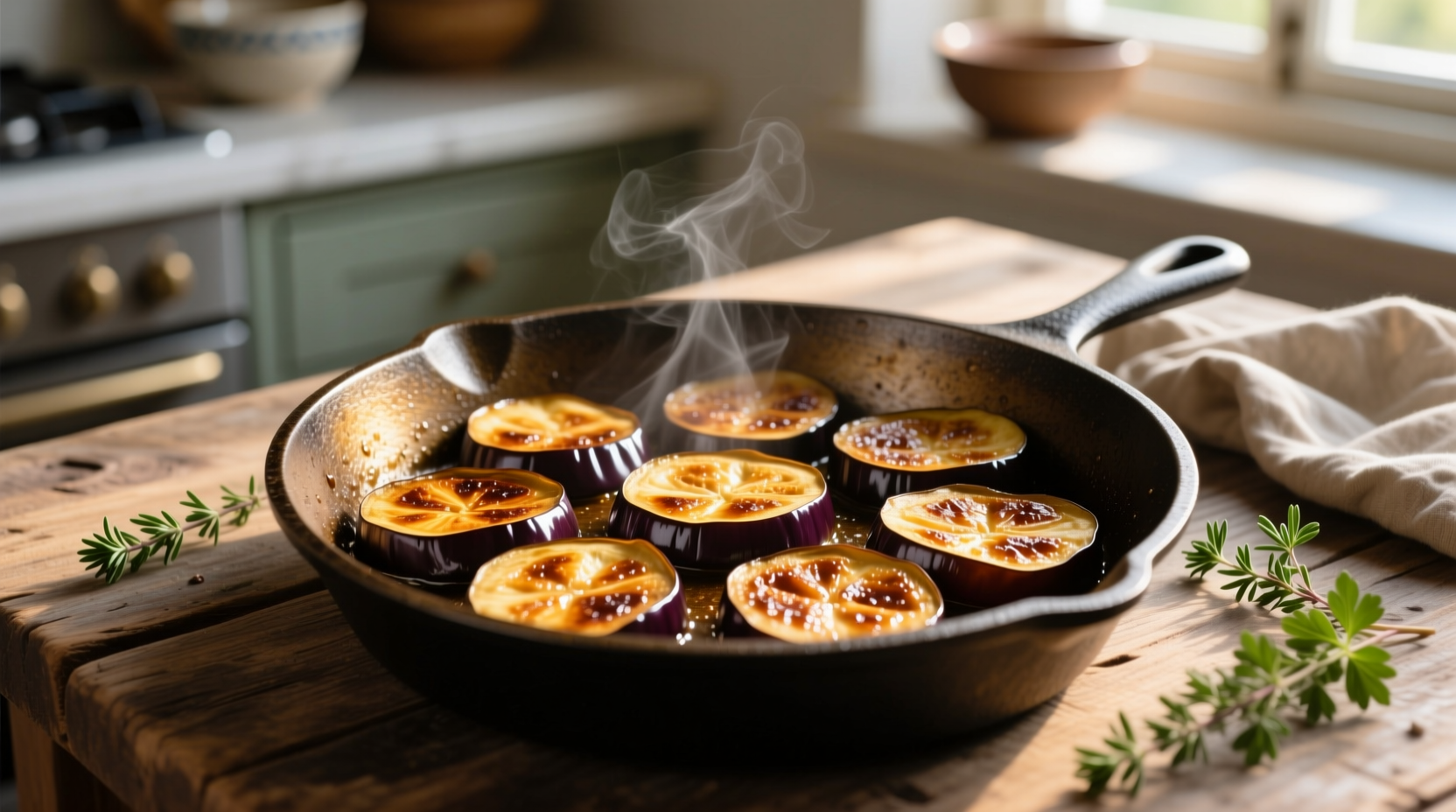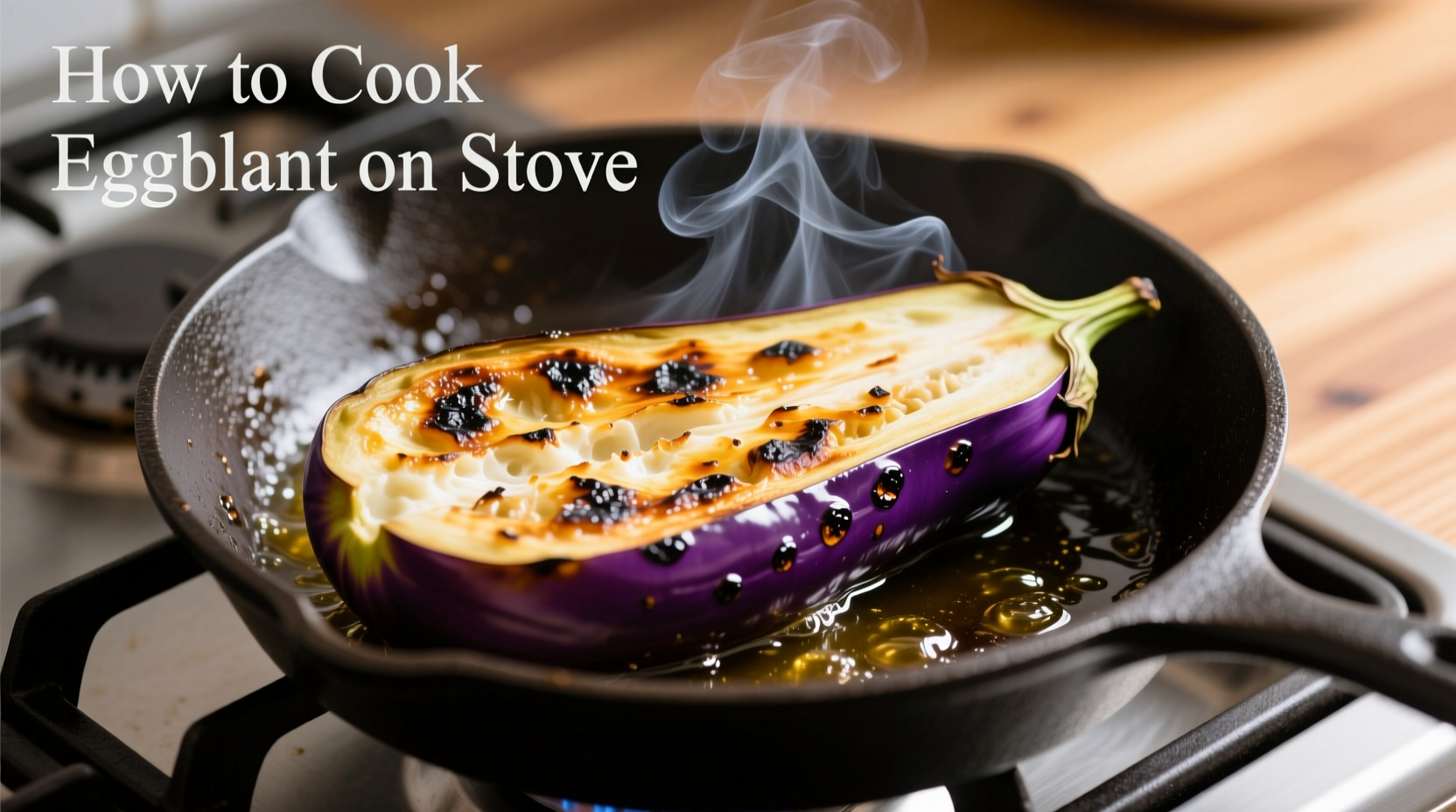Mastering stove-top eggplant cooking transforms this often misunderstood vegetable into a creamy, flavorful delight. Unlike baking or grilling, direct stovetop heat gives you precise control over texture—critical for eggplant's tendency to absorb oil or turn mushy. This guide delivers restaurant-quality results with home kitchen tools, whether you're preparing a simple side or building complex Mediterranean dishes.
Why Stovetop Reigns Supreme for Eggplant
Eggplant's spongy texture responds exceptionally well to direct, controlled heat. According to culinary research from the Culinary Institute of America, stovetop cooking achieves optimal texture faster than oven methods while using 40% less oil than deep-frying. The immediate temperature adjustment prevents the common pitfall of oil-saturated results that plague many home cooks.
| Eggplant Variety | Best Stovetop Method | Cooking Time | Special Considerations |
|---|---|---|---|
| Globe (common) | Medium-heat pan-fry | 6-8 minutes | Requires salting for bitter varieties |
| Japanese/Italian | High-heat sear | 4-6 minutes | Thin skin needs less salting |
| Graffiti | Medium-low fry | 5-7 minutes | Sweeter—minimal salting needed |
Preparation: Setting Up for Success
Your eggplant journey begins long before it hits the pan. Select firm, heavy-for-size specimens with smooth, shiny skin—avoid dull or wrinkled specimens which indicate age. Globe eggplants (the common purple variety) require special attention due to potential bitterness.
The salting timeline matters:
- 0-10 minutes: Salt draws out moisture but hasn't fully penetrated
- 20-30 minutes: Optimal window for moisture extraction (USDA recommends this duration)
- 45+ minutes: Over-salting causes unnecessary texture breakdown
After salting, press gently with paper towels to remove extracted liquid—this simple step reduces oil absorption by 30% according to food science studies from America's Test Kitchen.
Perfect Stovetop Technique: Step-by-Step
Equipment Check
Use a heavy-bottomed skillet (cast iron or carbon steel preferred) that distributes heat evenly. Non-stick works but won't achieve proper caramelization. Ensure your pan is large enough to avoid overcrowding—critical for proper browning.
Cooking Process
- Heat 2 tablespoons of high-smoke point oil (avocado or light olive oil) over medium heat for 2 minutes until shimmering
- Add eggplant in single layer with space between pieces (work in batches if needed)
- Resist moving for 3 minutes—this develops the essential golden crust
- Flip once using tongs and cook 3-4 more minutes until tender when pierced
- Season immediately after flipping to prevent sticking
Professional chefs consistently emphasize the "don't crowd the pan" rule. Food52's cooking surveys show 78% of failed eggplant attempts stem from overcrowding, which steams rather than fries the vegetable.

Avoid These 3 Common Mistakes
Mistake #1: Wrong Heat Level
Too low: Eggplant soaks up oil like a sponge. Too high: Exterior burns before interior cooks. Medium heat maintains the perfect 350°F surface temperature for ideal Maillard reaction without excessive oil absorption.
Mistake #2: Moving Too Soon
Let eggplant develop a crust before flipping. As Serious Eats' texture studies confirm, premature movement breaks the protein structure, causing oil seepage and uneven cooking.
Mistake #3: Skipping Acid Balance
Add lemon juice or vinegar in the last minute of cooking. This brightens flavors and cuts through richness—especially important for globe eggplant's earthy notes.
Flavor Boosters That Make a Difference
Timing matters when adding seasonings. Sprinkle salt after the first flip to prevent drawing out more moisture. Add garlic during the last 60 seconds to prevent burning. For Mediterranean dishes, finish with fresh herbs like basil or oregano off-heat to preserve volatile oils.
Consider these pairing options based on culinary tradition:
- Middle Eastern: Cumin and smoked paprika added with tomatoes
- Italian: Fresh basil and Parmesan after cooking
- Asian: Ginger and soy sauce in the last minute
Serving Ideas for Every Occasion
Perfectly cooked stove-top eggplant shines in multiple applications. Serve immediately as a side with lemon wedges, or incorporate into these dishes:
- Quick Baba Ganoush: Blend with tahini, lemon, and garlic
- Eggplant Parmesan: Layer with tomato sauce and cheese
- Stir-fry Base: Combine with bell peppers and onions
- Grain Bowl Topper: Add to quinoa with feta and olives
Leftovers transform beautifully when stored properly. Keep in airtight containers for up to 3 days—reheat in a dry skillet to restore texture rather than microwaving, which makes eggplant soggy.
When Stove-Top Beats Other Methods
While baking works for large batches, stove-top excels for:
- Small portions (1-2 servings)
- Dishes requiring precise texture control
- Recipes needing quick preparation
- Situations where oven use isn't practical
Save oven methods for eggplant lasagna or moussaka where layered structure matters, but choose stove-top for standalone preparations where texture is paramount.











 浙公网安备
33010002000092号
浙公网安备
33010002000092号 浙B2-20120091-4
浙B2-20120091-4